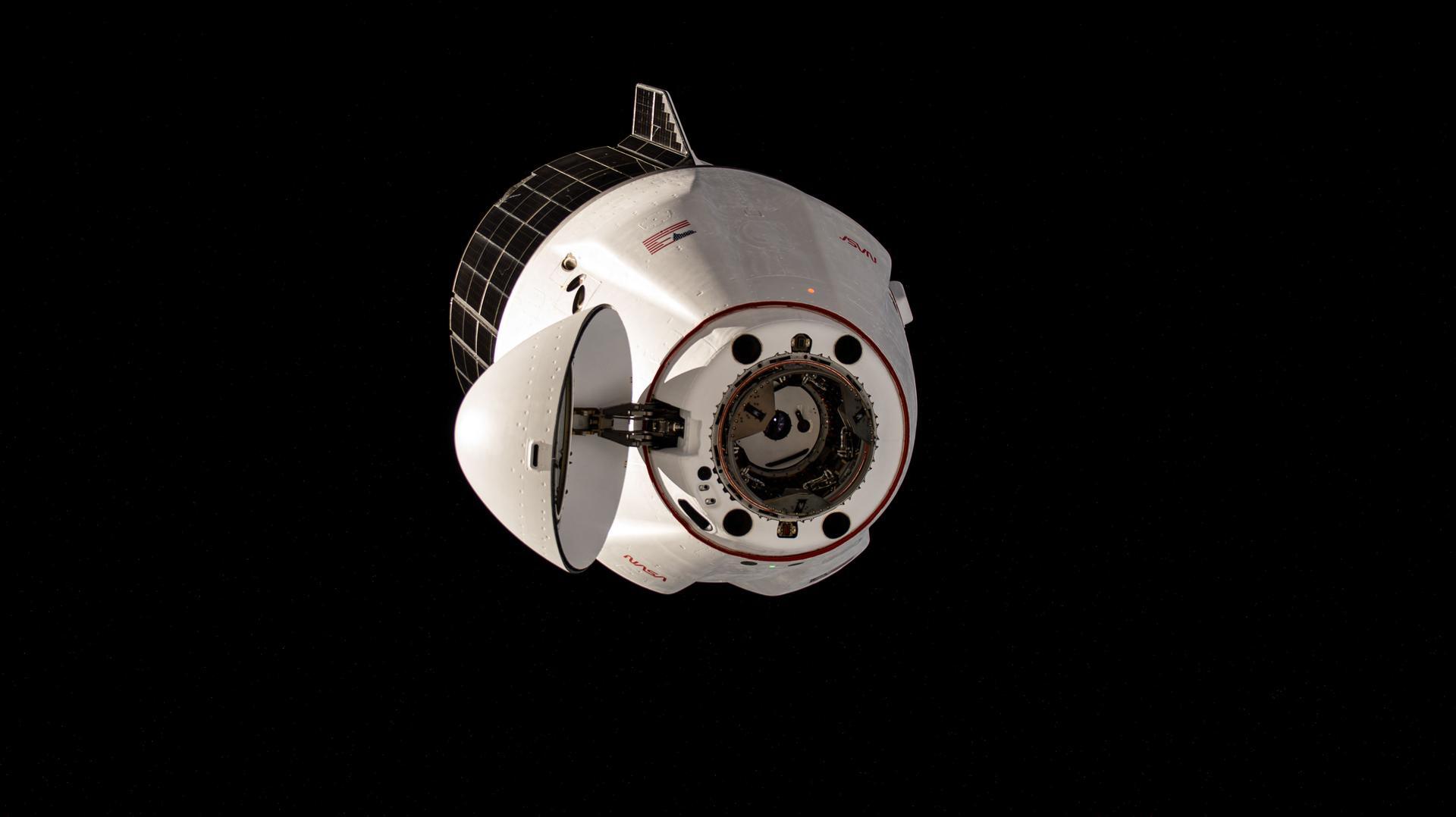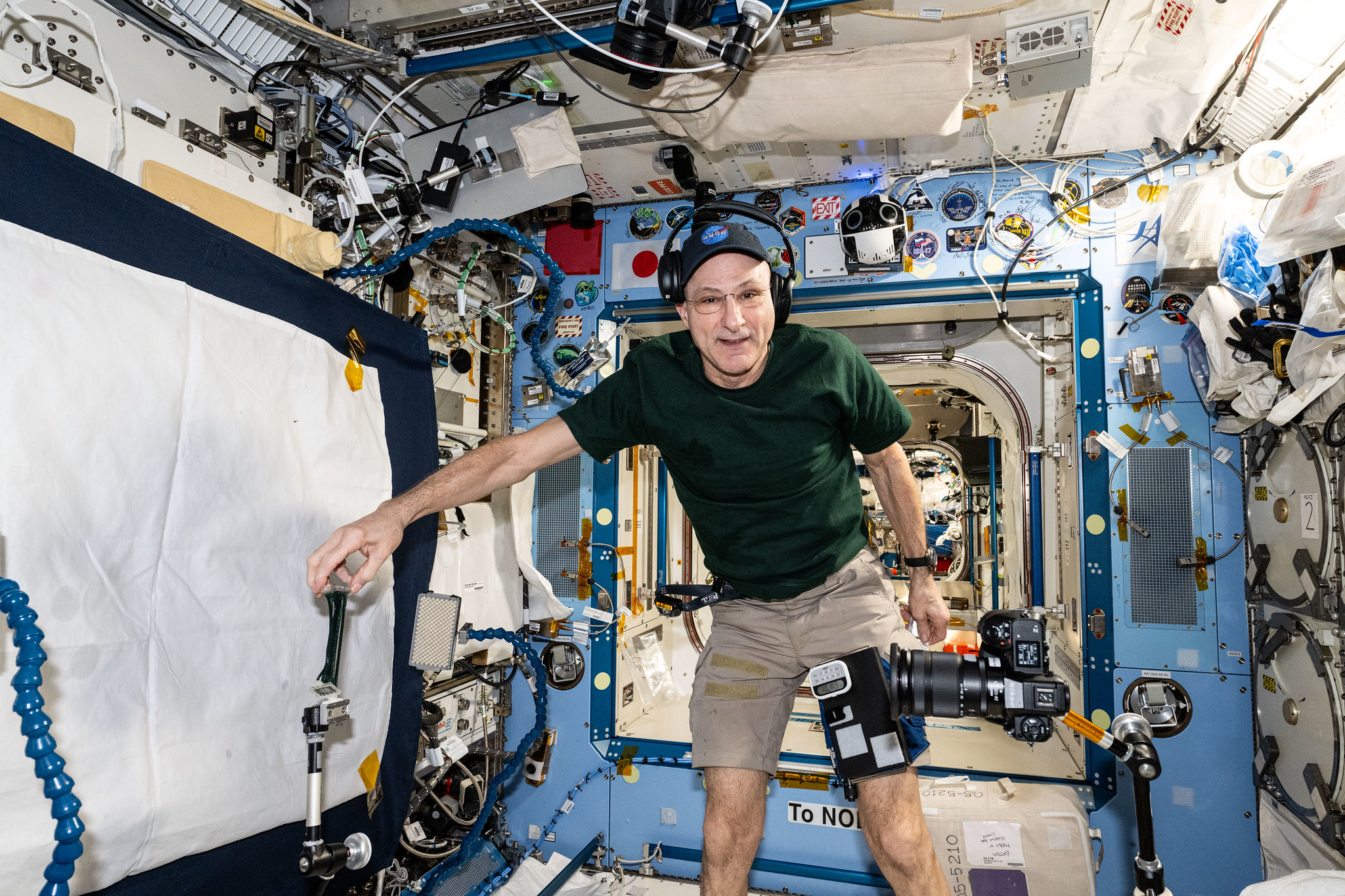25.04.2025

The Expedition 73 crew is beginning its first full week together unpacking the SpaceX Dragon cargo craft and activating new science experiments. The International Space Station residents are also gearing up for next week’s spacewalk while ensuring the ongoing operations of the orbiting laboratory.
The SpaceX Dragon cargo spacecraft delivered 6,700 pounds of science and supplies to the orbital residents after docking to the Harmony module’s space-facing port at 8:40 a.m. EDT on Tuesday. NASA astronaut Jonny Kim opened Dragon’s hatch shortly afterward and entered to begin unloading critical science experiments for installation and activation.
Commander Takuya Onishi of JAXA (Japan Aerospace Exploration Agency) kicked off the new Cell Gravisensing 3 experiment on Wednesday after removing the research gear from Dragon. He set up the hardware inside the Kibo laboratory module and began treating cell samples in Kibo’s Cell Biology Experiment Facility. The investigation will observe the cells’ molecular mechanisms and measure how the cells respond to microgravity. Results may lead to treatments for space-caused muscle and bone issues as well as similar conditions on Earth.
Kim began his day with NASA Flight Engineer Nichole Ayers removing research samples from inside Dragon’s science freezers and loading them inside space station science freezers. Kim then installed the Biofilms experiment containers in a pair of Kubik incubators in the Columbus laboratory module to begin studying antimicrobial surfaces that may keep spacecraft safe. Next, Kim photographed genetically modified tomato plants for a new space agriculture experiment studying if crops can grow without photosynthesis in space.
Ayers later joined NASA astronaut Anne McClain and configured the cables they will use when they go on a spacewalk planned for May 1. The cables will be used to install a modification kit on the station’s port side truss structure preparing it for a new rollout solar array that will be installed on a future date.
Roscosmos cosmonauts Sergey Ryzhikov and Alexey Zubritsky partnered together on Wednesday wearing virtual reality glasses displaying imagery while electrodes measured how their vision, balance, and spatial orientation is adjusting to microgravity. Flight Engineer Kirill Peskov wrapped up a 24-hour session wearing biomedical hardware that measured his heart rate and blood pressure wile he worked and exercised aboard the orbital outpost.
Quelle: NASA
+++
NASA Astronaut Don Pettit to Discuss Seven-Month Space Mission

Media are invited to a news conference at 2 p.m. EDT Monday, April 28, at NASA’s Johnson Space Center in Houston where astronaut Don Pettit will share details of his recent mission aboard the International Space Station.
The news conference will stream live on NASA’s website. Learn how to stream NASA contentthrough a variety of platforms.
To participate in person, U.S. media must contact the NASA Johnson newsroom no later than 5 p.m. Thursday, April 24, at 281-483-5111 or jsccommu@mail.nasa.gov. Media wishing to participate by phone must contact the newsroom no later than two hours before the start of the event. To ask questions by phone, media must dial into the news conference no later than 10 minutes prior to the start of the call. NASA’s media accreditation policy is available online.
Questions also may be submitted on social media during the news conference by using #AskNASA. Following the news conference, NASA will host a live question and answer session with Pettit on the agency’s Instagram. For more information, visit @NASA on social media.
Pettit returned to Earth on April 19 (April 20, Kazakhstan time), along with Roscosmos cosmonauts Alexey Ovchinin and Ivan Vagner. Pettit celebrated his 70th birthday on April 20. He spent 220 days in space as an Expedition 71/72 flight engineer, bringing his career total to 590 days in space during four spaceflights. Pettit and his crewmates completed 3,520 orbits of Earth over the course of their 93-million-mile journey. They also saw the arrival of six visiting spacecraft and the departure of seven.
During his time on orbit, Pettit conducted hundreds of hours of scientific investigations, including research to enhance on-orbit metal 3D printing capabilities, advance water sanitization technologies, explore plant growth under varying water conditions, and investigate fire behavior in microgravity, all contributing to future space missions.
Quelle: NASA
